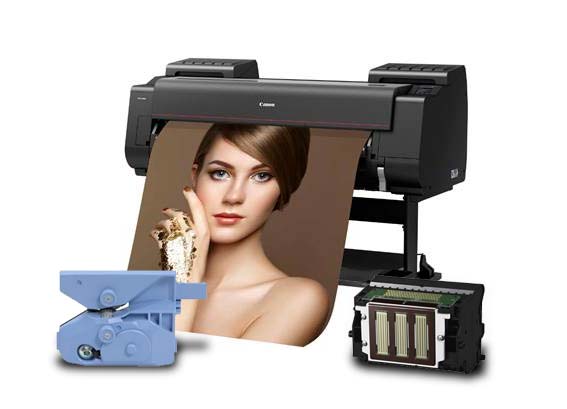Paper dust and debris collecting inside a large format printer is often seen as the primary cause of premature printhead failures. This is why many users choose to manually feed out and cut their canvas and backlit film prints off the roll with scissors or a blade instead of using the machine’s inbuilt rotary cutter blade.
In previous models (iPF Series) this time consuming process was minimised by using the “Cut Dust Reduction” which automatically printed a heavyweight line at the end of each print. This effectively wet the media slightly and meant that dust and debris was reduced when using the machine’s rotary cutter, prolonging the life of the printer, cutter and printhead.
We’re proud to say that Canon imagePROGRAF development never stands still, customer lead improvements, software and new features are always being worked on by the clever tech’s at Canon Inc.
One little known improvement is that the PRO series of printers now have a separate carriage assembly for the cutter, it’s incredibly strong and capable of cutting the thickest of canvas and cotton papers.
Having a separate carriage keeps cutting dust away from the print head while placing the cut closer to the paper exit point. In addition, this separation also benefits the drop placement accuracy of the head and no ink needs to be used to wet the cutting area.
Isn’t that incredible? Increased reliability, less ink used and better print quality, and all from just one simple alteration!
Canon imagePROGRAF – Always at the Cutting Edge





